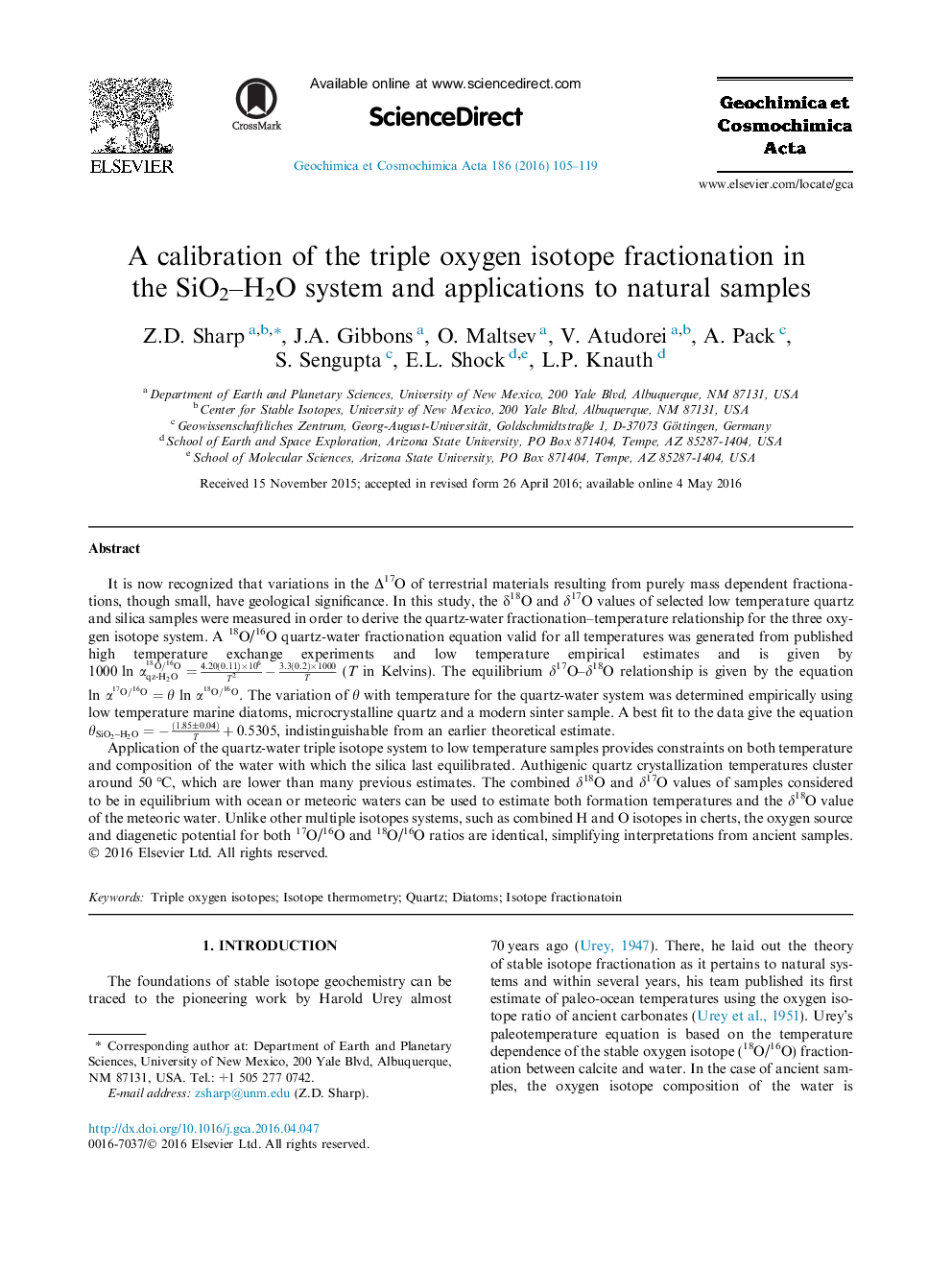| Article ID | Journal | Published Year | Pages | File Type |
|---|---|---|---|---|
| 6437282 | Geochimica et Cosmochimica Acta | 2016 | 15 Pages |
It is now recognized that variations in the Î17O of terrestrial materials resulting from purely mass dependent fractionations, though small, have geological significance. In this study, the δ18O and δ17O values of selected low temperature quartz and silica samples were measured in order to derive the quartz-water fractionation-temperature relationship for the three oxygen isotope system. A 18O/16O quartz-water fractionation equation valid for all temperatures was generated from published high temperature exchange experiments and low temperature empirical estimates and is given by 1000lnαqz-H2O18O/16O=4.20(0.11)Ã106T2-3.3(0.2)Ã1000T (T in Kelvins). The equilibrium δ17O-δ18O relationship is given by the equation lnα17O/16O=θlnα18O/16O. The variation of θ with temperature for the quartz-water system was determined empirically using low temperature marine diatoms, microcrystalline quartz and a modern sinter sample. A best fit to the data give the equation θSiO2-H2O=-(1.85±0.04)T+0.5305, indistinguishable from an earlier theoretical estimate.Application of the quartz-water triple isotope system to low temperature samples provides constraints on both temperature and composition of the water with which the silica last equilibrated. Authigenic quartz crystallization temperatures cluster around 50 °C, which are lower than many previous estimates. The combined δ18O and δ17O values of samples considered to be in equilibrium with ocean or meteoric waters can be used to estimate both formation temperatures and the δ18O value of the meteoric water. Unlike other multiple isotopes systems, such as combined H and O isotopes in cherts, the oxygen source and diagenetic potential for both 17O/16O and 18O/16O ratios are identical, simplifying interpretations from ancient samples.
